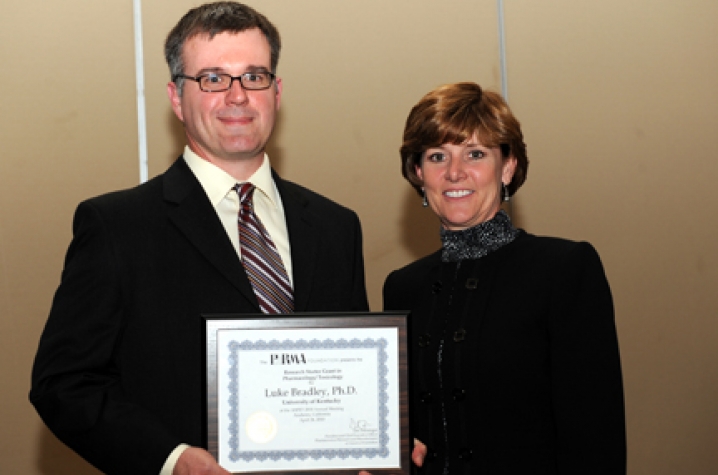New Direction in Search for Parkinson's Drugs

LEXINGTON, Ky. (Sept. 20, 2010) — A University of Kentucky researcher is exploring a new direction in the search for drugs to treat Parkinson's disease, and his research has garnered significant support from the pharmaceutical industry.
Luke Bradley, assistant professor of anatomy and neurobiology in the UK College of Medicine, received a prestigious New Starter award from the Pharmaceutical Research and Manufacturers of America (PhRMA) Foundation at the American Society for Pharmacology and Experimental Therapeutics annual meeting in Anaheim. These awards are given to new faculty members to help them establish their laboratories and get a major project started.
Bradley's project will investigate the mechanism of action of a novel peptide with anti-Parkinsonian activity, called dopamine neuron stimulating peptide-11 (DNSP-11). DNSP-11 is a small molecule derived from a protein called glial cell-derived neurotrophic factor (GDNF), which has been widely studied for its anti-Parkinsonian activity. Much of the research on GDNF has been led by Dr. Greg A. Gerhardt and Dr. Don M. Gash of the Morris K. Udall Center of Excellence for Parkinson’s Disease Research at the University of Kentucky.
Unfortunately, Bradley says, GDNF has not progressed as a therapeutic agent, chiefly because the relatively large size of the molecule prevents it from crossing the blood-brain barrier. This means that any therapeutic strategy relying on GDNF requires the drug to be infused directly into the brain by invasive means. By comparison, DNSP-11 is about 1/25 the size of GDNF, making it an attractive candidate from a drug-development perspective.
Parkinson's disease results from the death of brain cells (neurons) that produce the neurotransmitter dopamine, which is key to neurological processes controlling voluntary movement. In animal models, DNSP-11 has been shown have similar anti-Parkinsonian effects as GDNF. However, Bradley's research has demonstrated that it functions by a completely different biochemical mechanism.
"It's two different approaches to achieve a similar net result, which is to maintain a sufficient number of functioning dopamine-secreting cells," Bradley said. GDNF stimulates the growth and proliferation of more of these neurons, while DNSP-11 appears to prevent them from dying.
The goal of Bradley's work is to decipher the protective properties of DNSP-11 using molecular, proteomic and cellular biology approaches. The information obtained in this study will pave the way toward utilizing these identified sequences as "molecular scaffolds" for the further development of therapeutics targeting Parkinson's disease and other age-related neurodegenerative diseases.




